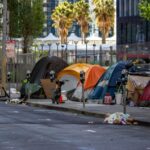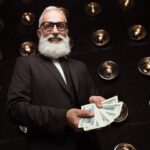Originally posted May 3, 2017.
You never know who you’re going to meet. Last week I had a great conversation with a business owner originally from Vermont who’s primary job is to make sure the area around power lines is clear of overgrowth and trees. He reminded me that it doesn’t take much to create a huge problem with the grid. In 2013 at TIME, Bryan Walsh asked if after 10 years, America was any less vulnerable to the type of blackout experienced by the Northeast in 2003. The same question should be posed today.
It wasn’t the tree’s fault — or least, not just the tree’s fault. Nearly 10 years ago, on Aug. 14, 2003, the electricity grid in the U.S. Northeast was stressed close to the limit. This wasn’t unusual; summer is a period of high demand in the Northeast, as air conditioners run overtime to compensate for the heat, and a number of older power plants were already offline for maintenance. As power lines became overloaded, they began sagging because of the high temperatures, until one line south of Cleveland touched an overgrown tree limb and short-circuited. What followed was a cascade of disaster due to a mix of human error and equipment failure, until by 4:10 p.m. E.T. that day more than 50 million people had lost power in parts of Ontario and eight U.S. states. New York City looked like this, and power wasn’t fully restored for two days. At the time it was the second most widespread power blackout in history, after a 1999 disaster in Brazil.
Today the blackout is remembered almost nostalgically, especially in New York. Jittery residents were relieved first to find out that they weren’t victims of a massive terrorist attack (9/11 had happened less than two years before) and then to discover that the power loss wasn’t going to lead to wide-scale looting and crime, as happened during the blackout of 1977. (See this great NPR piece about how the 2003 blackout practically became a civic holiday in New York.) But the blackout was a big deal, leading to at least 11 deaths and costing the economy some $10 billion. More important, the disaster underscored just how rickety our interconnected and jury-rigged electrical grid was — and how vulnerable it could be to disruption, both accidental and malevolent.
Read more about the threat to America’s infrastructure systems here.
E.J. Smith - Your Survival Guy
Latest posts by E.J. Smith - Your Survival Guy (see all)
- “Happy I Found Richard C. Young’s Intelligence Report” - April 16, 2024
- Residents Lose Faith in Blue Cities - April 16, 2024
- Want to Make and Keep Generational Wealth? - April 16, 2024
- Your Retirement Life: Watching The Masters and More - April 15, 2024
- Fight Food Inflation with Gold - April 15, 2024















